Art in the Garden
In this interactive walking-tour, students will gain insight in including art in the landscape, at any scale, while viewing examples located throughout the Gardens.
In this interactive walking-tour, students will gain insight in including art in the landscape, at any scale, while viewing examples located throughout the Gardens.
Paint a beautiful silk scarf with a botanical theme. Specimens will be provided by the Gardens to inspire your creativity and design. Students will go home with a lovely scarf and a fun new skill. Materials are provided for a $20 fee, collected on the first day of the workshop.
Join us and get mothing! The Gardens has teamed up with The Caterpillar Lab for an after-hours mothing extravaganza. Lightsheeting, or “mothing,” is the practice of providing an irresistible surface for insects to land on by illuminating a large white sheet. This favorite pastime of biologists has quickly become a popular hobby for nature lovers, gardeners, and the naturally curious worldwide. Popular events like National Moth Week and Mothapalooza have been attracting more and more attention—and now you, too, can be an explorer at this exclusive, after-hours event.
The Caterpillar Lab Director, Sam Jaffe, will arrange his ultra-moth-attracting setup and be on hand to help identify the hundreds of species we’ll likely attract. Come ready to be amazed by the diversity, size, and beauty of Maine’s nocturnal insect inhabitants. Before long, you too will be hooked on this popular pastime.
For the best experience, avoid bright clothing, wear long sleeves and pants, and bring a flashlight and insect repellant. This program is designed for anyone ages 10 and up, adults and families alike.
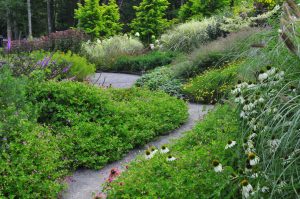 Interested in gardening with ornamental grasses, but aren’t sure if you’re ready to commit or how to apply them in a garden? At Coastal Maine Botanical Gardens, we have a plethora of ornamental native and non-native grasses through which Syretha Brooks, gardener and garden designer, will guide you. By studying the variety of shapes, sizes, textures, and colors, students will clearly understand how to use grasses effectively in perennial gardens or naturalized settings. Discussion will include grass management, cultivation, and habits.
Interested in gardening with ornamental grasses, but aren’t sure if you’re ready to commit or how to apply them in a garden? At Coastal Maine Botanical Gardens, we have a plethora of ornamental native and non-native grasses through which Syretha Brooks, gardener and garden designer, will guide you. By studying the variety of shapes, sizes, textures, and colors, students will clearly understand how to use grasses effectively in perennial gardens or naturalized settings. Discussion will include grass management, cultivation, and habits.
To provide safe, in-person classes at the Gardens, classes are held entirely outdoors and have been reduced to 12 students. We are practicing Maine CDC social-distancing protocols. This course is alternately available in an online format.
Syretha Brooks is a horticulturist and project manager at Pretty Flowers, a landscape and design company based in Brunswick, Maine. A native of Harpswell, Maine, she has a degree in fine arts from Smith College, which has greatly aided in developing her eye for plant designing and curation. Syretha was formerly a horticulturist at New York City’s Wave Hill Gardens before returning to her home state of Maine and working as a horticulturist here at Coastal Maine Botanical Gardens for four years.
The Caterpillar Lab is moving in, and while the exhibit is filled with munching critters offering lots to explore, the real story is the one happening outdoors. In our many gardens (as well as your own backyard), these creatures are living out their strange lives in the wild. Join The Caterpillar Lab Director, Sam Jaffe, on an exploration of the Gardens in search of native caterpillars and other insects. Learn how The Lab finds its caterpillars, all about host plants and parasitoids, and discover caterpillar-finding secrets from one of the world’s foremost caterpillar hunters! This walk is appropriate for naturalists, gardeners, and explorers of all ages. It may not, however, be appropriate for more casually interested younger children.
Learn from expert wreath maker Jen Dunlap, whose amazing and imaginative harvest wreaths feature dried floral and foliar cuttings from the garden. Walk the Gardens with Jen and learn which plants are perfect for dried wreaths and other dried compositions. Jen will discuss the proper time to cut and drying methods. This class pairs perfectly with the online tutorial, Making a Harvest Wreath, happening in October.
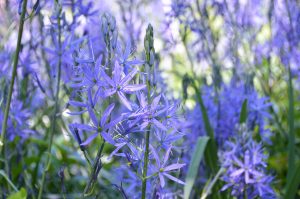 In this class, Courtney Locke, bulb grower and Staff Horticulturist, will discuss the world of bulbs beyond tulips and daffodils. Although the latter are beautiful and deserve attention, there are many varieties that bloom later into the summer and fall. Aconites, Camassia, and fall crocus are just a few that will be featured. Courtney will take you on an online visual journey; learn how to landscape with these bulbs, including naturalizing or gardening within an ornamental border, and how to manage bulb species over time—most bulbs are perennials, perfect partners in sustainable gardening.
In this class, Courtney Locke, bulb grower and Staff Horticulturist, will discuss the world of bulbs beyond tulips and daffodils. Although the latter are beautiful and deserve attention, there are many varieties that bloom later into the summer and fall. Aconites, Camassia, and fall crocus are just a few that will be featured. Courtney will take you on an online visual journey; learn how to landscape with these bulbs, including naturalizing or gardening within an ornamental border, and how to manage bulb species over time—most bulbs are perennials, perfect partners in sustainable gardening.
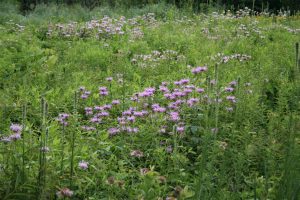 Seeds are miracles of the plant world – a lot of power packed into a small case that sustains nature’s biodiversity. Former horticulturist and lead propagator of Norcross Wildlife Sanctuary and native seed specialist, Leslie Duthie, will guide students through the process of growing meadow plants from seed. Whether you’d like to convert a lawn into a mini meadow-scape, diversify an existing field, or start a large-scale meadow from scratch, Leslie will share the secrets of making meadows succeed. Using the palette of the Gardens’ naturalized areas, discussion will include seed collection, storage, and plant selection as pertaining to the environmental conditions of a setting.
Seeds are miracles of the plant world – a lot of power packed into a small case that sustains nature’s biodiversity. Former horticulturist and lead propagator of Norcross Wildlife Sanctuary and native seed specialist, Leslie Duthie, will guide students through the process of growing meadow plants from seed. Whether you’d like to convert a lawn into a mini meadow-scape, diversify an existing field, or start a large-scale meadow from scratch, Leslie will share the secrets of making meadows succeed. Using the palette of the Gardens’ naturalized areas, discussion will include seed collection, storage, and plant selection as pertaining to the environmental conditions of a setting.
Leslie Duthie is a lifelong gardener. She was formerly employed at the Norcross Wildlife Sanctuary where she was the horticulturist and plant propagator for over 38 years. An accomplished grower of ferns and wildflowers, she says you can't really know a plant until you have grown it from seed. Now retired, she continues to volunteer at various gardens and works to protect land for her local Conservation Commission and land trust.
Celebrate the natural world by creating a work of art honoring the relationship between an animal and a plant. Block printing, a form of relief printing, is the oldest, simplest, and most direct approach to making an impression. Experience all aspects of the process, from handling and care of tools through inking and printing your own images by hand.
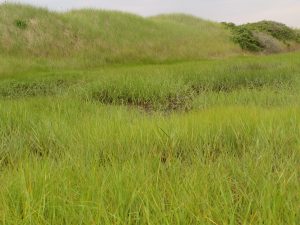 Plants of salt marsh communities are uniquely adapted to tolerate and survive the stress of repeated, daily salt-water flooding. Learn which members of our wild flora can withstand these harsh conditions and the various mechanisms they’ve evolved to cope with—and even thrive in—environmental conditions that would kill most plants. Melissa will lead you on a low-tide botanical journey into an iconic and vulnerable Maine habitat. Please wear boots or sneakers that can get wet (and maybe redolent of the salt-marsh…).
Plants of salt marsh communities are uniquely adapted to tolerate and survive the stress of repeated, daily salt-water flooding. Learn which members of our wild flora can withstand these harsh conditions and the various mechanisms they’ve evolved to cope with—and even thrive in—environmental conditions that would kill most plants. Melissa will lead you on a low-tide botanical journey into an iconic and vulnerable Maine habitat. Please wear boots or sneakers that can get wet (and maybe redolent of the salt-marsh…).
Whether grown from seed or transplanted as seedlings, native woody species can adapt to changing conditions and challenging environments, benefitting urban communities and rural developments or woodlots by filling in empty spaces and protecting and bringing nutrients back to the soil.
Drip, pour, drag, layer, heat, and incise! Learn the art of encaustic painting in this hands-on workshop using pigmented wax and a heated palette! Through a rich variety of marks and surfaces, explore the various painting techniques of this seductive medium. We will also look to CMBG’s gardens as sources of inspiration.
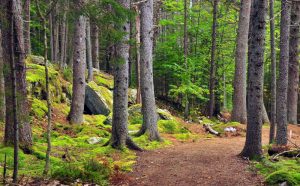 Deepening your connection to nature through moving meditation offers enormous benefits for personal well-being. Follow Susan Bickford, forest therapy guide for the ancient Japanese practice, Shinrin Yoku, or forest bathing, as she gives you the tools to begin your own meditation practice. In this gentle class, experience how the simple practice of walking mindfully through a forest can provide deep serenity. By engaging with the forest with all five senses, we enhance awareness and presence. Despite a busy lifestyle, taking time for ourselves is enormously important—what luck that we can do so by walking in the forest!
Deepening your connection to nature through moving meditation offers enormous benefits for personal well-being. Follow Susan Bickford, forest therapy guide for the ancient Japanese practice, Shinrin Yoku, or forest bathing, as she gives you the tools to begin your own meditation practice. In this gentle class, experience how the simple practice of walking mindfully through a forest can provide deep serenity. By engaging with the forest with all five senses, we enhance awareness and presence. Despite a busy lifestyle, taking time for ourselves is enormously important—what luck that we can do so by walking in the forest!
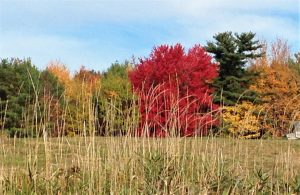 Our Northeastern forest genera consists of a wide assortment of deciduous and coniferous species that vary throughout the macro- and micro-climatic regions of Maine. Understanding these species helps inform landowners about management, the local ecology, soils, and successional development. Join us and learn how to identify many of Maine's forest trees and about concepts like silvaculture and climate adaptive species. Autumn is the perfect time for this exploration—beyond the natural spectacle, the range of fall colors provides Allysa Gregory, Maine District Forester, the perfect palette by which to explain trees and their color choices. Leave feeling more connected to our forests and confident in identifying trees in your area.
Our Northeastern forest genera consists of a wide assortment of deciduous and coniferous species that vary throughout the macro- and micro-climatic regions of Maine. Understanding these species helps inform landowners about management, the local ecology, soils, and successional development. Join us and learn how to identify many of Maine's forest trees and about concepts like silvaculture and climate adaptive species. Autumn is the perfect time for this exploration—beyond the natural spectacle, the range of fall colors provides Allysa Gregory, Maine District Forester, the perfect palette by which to explain trees and their color choices. Leave feeling more connected to our forests and confident in identifying trees in your area.
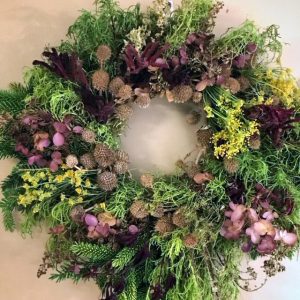 Ever wanted to preserve your garden after the season has ended, extending the enjoyment of its bounty? Join Staff Horticulturist Jen Dunlap and learn the process of making dried wreaths from cuttings collected from your garden or surrounding property. Jen will take you through this art and craft, step-by-step. A materials list will be supplied upon registration, as will a list of suggested cuttings to have on-hand, if you’d like to make a wreath during class. If you won’t have the dried cuttings, you can still learn and keep the recorded class demonstration as reference.
Ever wanted to preserve your garden after the season has ended, extending the enjoyment of its bounty? Join Staff Horticulturist Jen Dunlap and learn the process of making dried wreaths from cuttings collected from your garden or surrounding property. Jen will take you through this art and craft, step-by-step. A materials list will be supplied upon registration, as will a list of suggested cuttings to have on-hand, if you’d like to make a wreath during class. If you won’t have the dried cuttings, you can still learn and keep the recorded class demonstration as reference.
Join Amanda Devine, Regional Steward Manager for Maine Coast Heritage Trust, and Portland City Arborist Jeff Tarling to discuss and learn about the important tools, prevention strategies, and resources needed for dealing with invasive plants in constructed and natural areas. As project sites are connected to the surrounding environment when it comes to invasive plants, emphasis will be on actionable ways—the methods and measures—landscape professionals can make a difference for their clients and their communities.
Get into the mood for the winter holidays by making your own evergreen wreath—there’s nothing like the sharp, clean scent of balsam fir to signal the beginning of the festive season. In this virtual workshop and demonstration, Horticulturist Jen Dunlap will lead you through the process of making your own unique winter wreath. Students can register with an option to pick up greenery from CMBG; instructions will be provided in a follow-up email. All registered students will receive a helpful list of suggested resources for other necessary supplies in that same email confirmation.
Now that the garden is put to bed, it’s a great time to read those books you’ve been meaning to get to all season long. Join the conversation as we discuss four acclaimed books featuring plants at their core. This year, to be sure everyone can participate, we will be conducting these conversations via Zoom. Just sign up, read the selection, and then join the group by logging into the Zoom discussion that day. Selections include: Life in the Garden, The Age of Wood, The Garden of Evening Mists, and Uprooted: A Gardener’s Reflections on Beginning Again.
Horticulturist and floral designer Diane Walden creates wild and whimsical arrangements all year round. Join this master of her craft in this virtual workshop and create your own arrangement, a perfect reflection of your personal taste and a festive nod to the season. Everything from evergreens to birch bark, berries, seedheads, and select floral options combine to create a stunning arrangement. Diane will guide you through the steps, freeing you from the traditional store-bought arrangements. Students can register with an option to pick up greenery from CMBG; instructions will be provided in a follow-up email. All registered students will receive a helpful list of suggested resources for other necessary supplies in that same email confirmation.
The cool, damp climate of Maine and northern New England is perfect for mosses. Bill Cullina, author of newly reissued Native Ferns, Moss & Grasses, will briefly cover a dozen of the most common moss species growing everywhere from sidewalks to lawns, damp boreal forests to bogs. Helpful lessons on moss anatomy and ecology, which native ferns combine well with mosses, and how to ethically and successfully introduce mosses into a site without harming existing moss ecology will feature in the discussion. Q&A will follow at the end of the one-hour presentation.
Longtime nursery grower Jeff O'Donal will discuss those often overlooked or forgotten factors that go into choosing trees and shrubs for a new landscape. While the setting itself dictates size and shape, also important to consider are tree health, the root-ball structure (whether in a pot or B&B), rate of growth, and adaptability to a new site. All this and more goes into choosing the right specimens for the right place, ensuring they thrive long into the future. Whether or not you’re a seasoned landscaper or gardener, this topic is always relevant to our practice. Come with questions and testimonials to share after the one-hour presentation.
Fridays, February 7, 14, 28, and March 7 | Resilient landscape practices are connected to the evolving environment. Incorporating low-maintenance design, resilient landscapes sustain and regenerate under stressful environmental conditions, rather than falling victim to stressors. They are aesthetic, powerhouse systems providing ecological services; as such, they give the landscape professional the opportunity to evolve their business, adapting to the changing environment. Section I of the course focuses on examining and incorporating ecological design and the influential components of water, soils, design lessons from nature, and sustainable structural materials.
The forest edge plays a significant role in ecological landscapes, both for wildlife habitat and landscape design aesthetics. In this webinar, Andy Brand and Irene Barber will discuss how and what to use to establish attractive forest edges. This “edge” concept can be very useful in urban landscapes, attracting and hosting birds and pollinators year-round. Talking points include selecting species for a variety of landscape conditions, hospitable plants for bird species, woody plants for year-round appeal, and what plants grow well together.
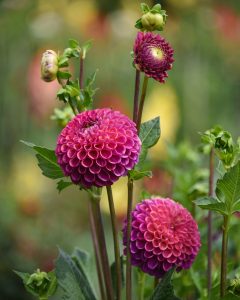 Join dahlia lover and horticulturist Courtney Locke to learn the best methods for growing these stunning gems. We’ll cover all aspects of locating, planting, and growing dahlia tubers, including purchasing, site planning, soil preparation, staking, feeding, pest protection, and (finally!) cutting and enjoying these sumptuous flowers. Learn how to identify the parts of a tuber, the different types of dahlia flower forms, and determine the best fit for your garden. As CMBG’s official dahlia grower, Courtney knows first-hand the exceptional cultivars that produce the jaw-dropping blooms that are truly worth the wait.
Join dahlia lover and horticulturist Courtney Locke to learn the best methods for growing these stunning gems. We’ll cover all aspects of locating, planting, and growing dahlia tubers, including purchasing, site planning, soil preparation, staking, feeding, pest protection, and (finally!) cutting and enjoying these sumptuous flowers. Learn how to identify the parts of a tuber, the different types of dahlia flower forms, and determine the best fit for your garden. As CMBG’s official dahlia grower, Courtney knows first-hand the exceptional cultivars that produce the jaw-dropping blooms that are truly worth the wait.
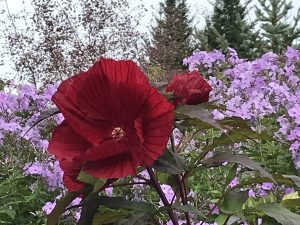 In this panel presentation, four CMBG horticulturists will review their top five perennials, from longtime favorites to new darlings from the 2021 growing season. With so many beautiful perennials at CMBG, each showing off unique foliage, flowers, structure, and wildlife benefits at various times of the year, it’s difficult to choose which ones to feature—but these top-20 are a good place to start!
In this panel presentation, four CMBG horticulturists will review their top five perennials, from longtime favorites to new darlings from the 2021 growing season. With so many beautiful perennials at CMBG, each showing off unique foliage, flowers, structure, and wildlife benefits at various times of the year, it’s difficult to choose which ones to feature—but these top-20 are a good place to start!
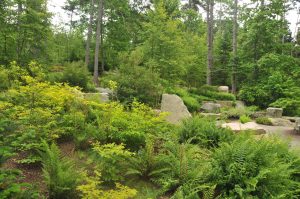 Choosing native plants for your landscape should be fun and creative, not daunting or complicated! When you consider plants in simple groupings, or guilds, it becomes a lot easier to design a landscape with appealing texture, color, and wildlife value throughout the seasons. Native plant guilds draw inspiration from naturally occurring plant communities in habitats like coastal plains, forests, wetlands, or mountain tops. Leave this introductory webinar inspired, with plant lists for various light and soil conditions or landscape functions and the tools necessary for selecting your own plants for beauty and biodiversity.
Choosing native plants for your landscape should be fun and creative, not daunting or complicated! When you consider plants in simple groupings, or guilds, it becomes a lot easier to design a landscape with appealing texture, color, and wildlife value throughout the seasons. Native plant guilds draw inspiration from naturally occurring plant communities in habitats like coastal plains, forests, wetlands, or mountain tops. Leave this introductory webinar inspired, with plant lists for various light and soil conditions or landscape functions and the tools necessary for selecting your own plants for beauty and biodiversity.
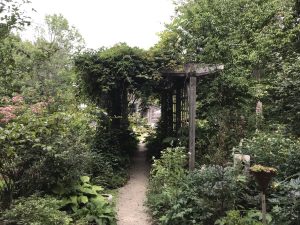 Whether designing one garden or several, the first step is to understand the history and significance of garden design before diving into its fundamentals. Irene Barber, landscape designer and the Gardens’ Adult Education Program Manager, will introduce students to garden themes from different cultures and civilizations, all of which relate to the principles and elements of design relevant today.
Whether designing one garden or several, the first step is to understand the history and significance of garden design before diving into its fundamentals. Irene Barber, landscape designer and the Gardens’ Adult Education Program Manager, will introduce students to garden themes from different cultures and civilizations, all of which relate to the principles and elements of design relevant today.
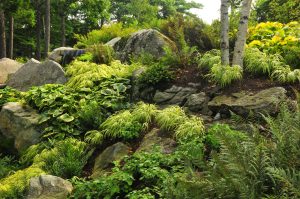 Geography and cultural history are pertinent factors for decisions made in garden design, particularly in New England’s unique and diverse landscapes, from river valleys to rolling fields to narrow, rocky corridors. Students will understand how to establish a sense of place and belonging, wherever their prospective garden is to be located. No matter what cultural elements and influences you want to incorporate, this class will help you get creative while staying true to a sense of place.
Geography and cultural history are pertinent factors for decisions made in garden design, particularly in New England’s unique and diverse landscapes, from river valleys to rolling fields to narrow, rocky corridors. Students will understand how to establish a sense of place and belonging, wherever their prospective garden is to be located. No matter what cultural elements and influences you want to incorporate, this class will help you get creative while staying true to a sense of place.